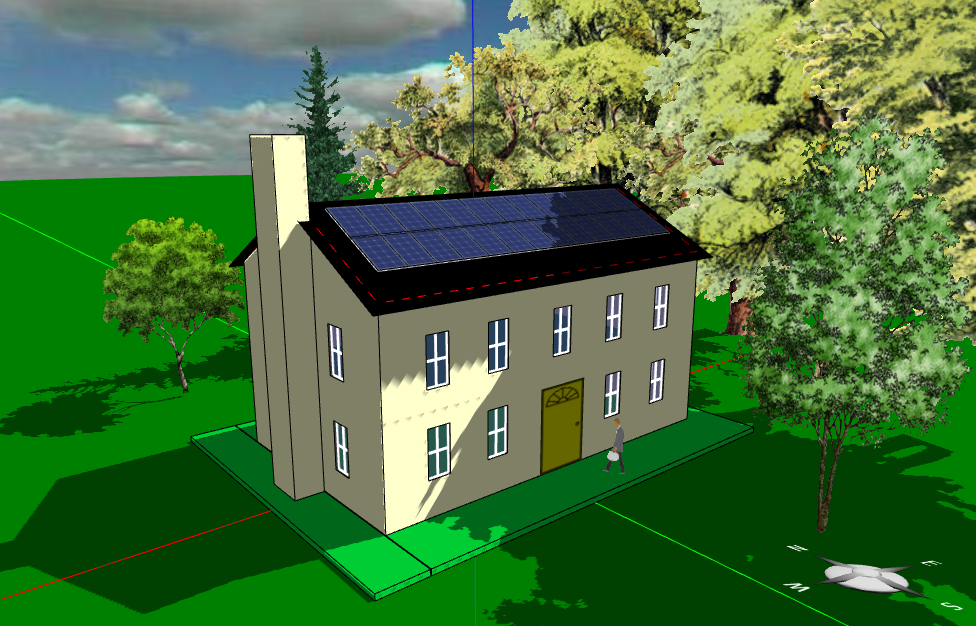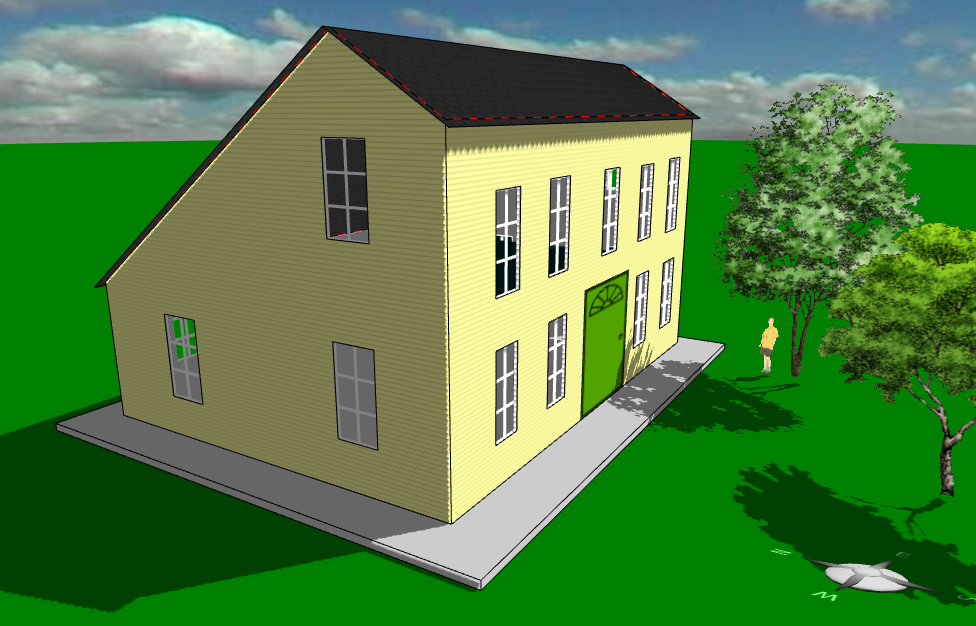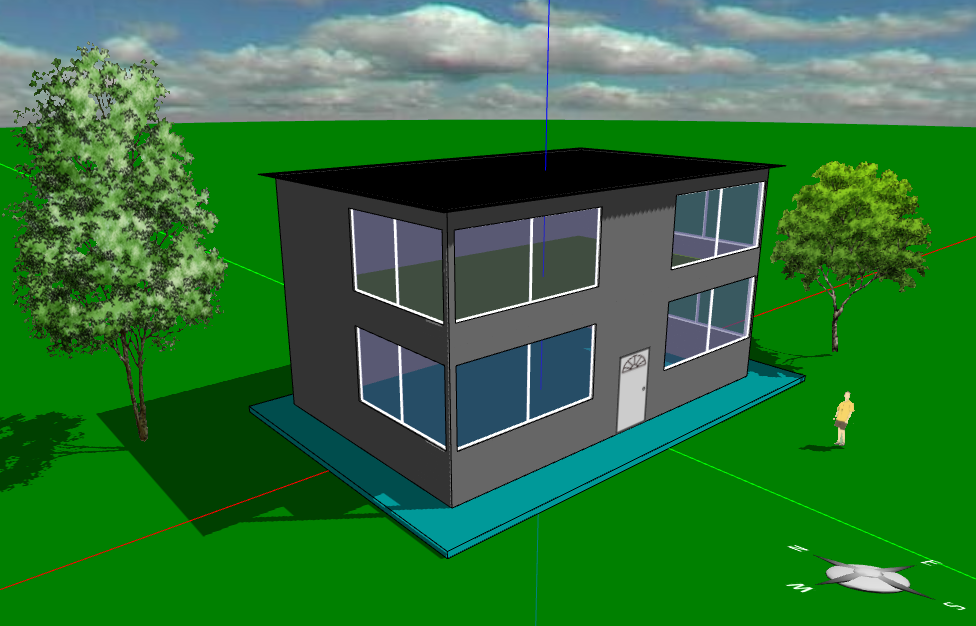 Energy3D supports the design of some basic architectural styles commonly seen in New England, such as Colonial and Cape Cod. Its simple 3D user interface allows users to quickly sketch up a house with an aesthetically pleasing look -- with only mouse clicks and drags (and, of course, some patience). This makes it easy for middle and high school students to create meaningful, realistic designs and learn science and engineering from these authentic experiences -- who wants to keep doing those cardboard houses that look nothing like a real house for another 100 years?
Energy3D supports the design of some basic architectural styles commonly seen in New England, such as Colonial and Cape Cod. Its simple 3D user interface allows users to quickly sketch up a house with an aesthetically pleasing look -- with only mouse clicks and drags (and, of course, some patience). This makes it easy for middle and high school students to create meaningful, realistic designs and learn science and engineering from these authentic experiences -- who wants to keep doing those cardboard houses that look nothing like a real house for another 100 years? The true enabler of science learning in Energy3D is its analytic capability that can tell students the energy consequences of their designs while they are working on them. Without this analytical capability, learning would have been cut short at architectural design (which undeniably is the fun part of Energy3D that entices students to explore many different design options that entertain the eyes). With the analytical capability, the relationship between form and function becomes a major driving force for student design. It is at this point that an Energy3D project becomes an engineering design project.
The true enabler of science learning in Energy3D is its analytic capability that can tell students the energy consequences of their designs while they are working on them. Without this analytical capability, learning would have been cut short at architectural design (which undeniably is the fun part of Energy3D that entices students to explore many different design options that entertain the eyes). With the analytical capability, the relationship between form and function becomes a major driving force for student design. It is at this point that an Energy3D project becomes an engineering design project. Architectural design, which focuses on designing the form, and engineering design, which focuses on designing the function, are equally important in both educational and professional practices. Students need to learn both. After all, the purpose of design is to meet various people's needs, including their aesthetic needs. This principle of coupling architectural design and engineering design is of generic importance as it can be extended to the broader case of integrating industrial design and engineering design. It is this coupling that marries art, science, and usability.
Architectural design, which focuses on designing the form, and engineering design, which focuses on designing the function, are equally important in both educational and professional practices. Students need to learn both. After all, the purpose of design is to meet various people's needs, including their aesthetic needs. This principle of coupling architectural design and engineering design is of generic importance as it can be extended to the broader case of integrating industrial design and engineering design. It is this coupling that marries art, science, and usability.We are working on providing a list of common architectural styles that can be designed using Energy3D. These styles, four of them are shown in this article, show only the basic form of each style. Each should only take less than an hour to sketch up for beginners. If you want, you can derive more complex and detailed designs for each style.

No comments:
Post a Comment